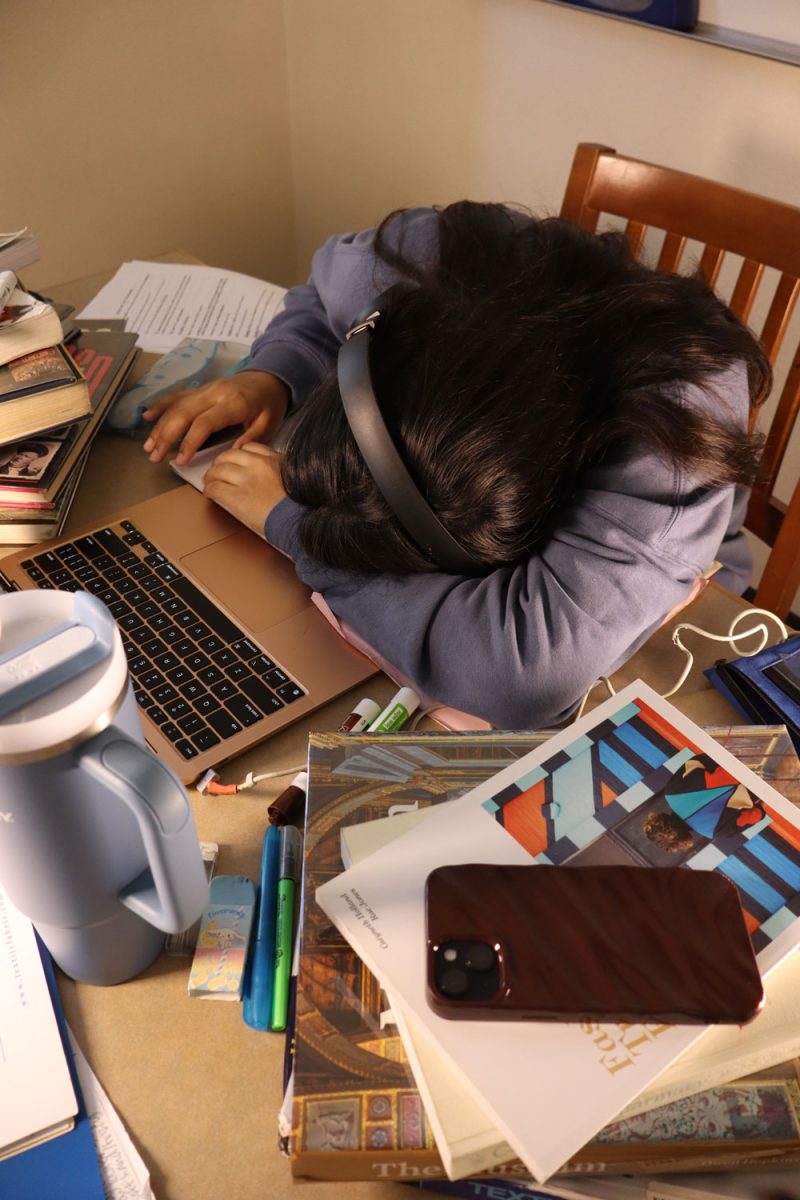It was 3 a.m., and I had been staring at my computer screen for what seemed like hours. The deadline for my midterm paper was in a couple hours, and I had barely written two coherent paragraphs. My eyes stung from the lack of sleep, my hands trembled as I tried to type, and my mind raced, jumping from one anxious thought to another. I felt overwhelmed by exhaustion, but I was still unable to stop. No matter how hard I tried, I couldn’t shake the thought that I was failing. The weight of my responsibilities—school, work and life—pushed down on my chest, making it hard for me to breathe. This was burnout—the moment I realized during my freshman year of college that I couldn’t keep up with everything, no matter how hard I pushed myself. It was a wake-up call that made me understand the importance of recognizing my limits and prioritizing my well-being.

Burnout is not just a feeling of fatigue or stress. It is a full-body experience of emotional, mental and physical collapse. According to a survey conducted by the American College Health Association, 87% of college students report feeling overwhelmed by their responsibilities at least once during the school year. Of those 87% of students, nearly 45% say that stress has affected their academic performance. Burnout has become a crisis in higher education, where students are often caught in a whirlwind of academic stress, social obligations, jobs and familial duties.
For international students like me, this situation can be even more overwhelming. Living thousands of miles away from home, without the comfort and reliability of family, I’m under an extra layer of pressure by navigating a new culture. Although I was way past burnt out, I had to keep going to justify the sacrifices my mom made to send me to a college abroad. Failure was not an option. Yet, my grades told a different story.
I had come to the United States from India with big dreams of attending Cal State University, Fullerton and majoring in English. Although, after my first year, my grades were not where they needed to be. I remember the pit in my stomach when I realized that I might not be able to continue at my dream school. Instead, I had to make the difficult decision to transfer to a two-year college, hoping to find balance and regain control over my life. But that choice came with its own set of internal conflicts.
The burnout I was experiencing was not sudden; it had been building for months, creeping in slowly. I thought I could do it all, and I tried. In my first year, I signed up for everything I could—volunteering, joining student clubs and attending social events. I told myself I could manage all these responsibilities to be a well-rounded student. But I was wrong. Each week, I found myself falling further behind on assignments, losing the motivation to attend class and canceling plans with my friends.
I remember lying awake at night, too anxious to sleep but too exhausted to do anything else—feeling guilty for not being able to keep up with the expectations I had set for myself. I began questioning whether I was cut out for college or if I had made the wrong choice in coming so far from home. On some days, I would feel numb, going through the motions but not really engaging with my work or the people around me. Other days, I would panic, feel overwhelmed and call my mom at 2 a.m.
Burnout often manifests in these cycles of extreme exhaustion and high anxiety. A 2018 study published in Frontiers in Psychology found that burnout is more than just feeling stressed; it is a chronic condition characterized by emotional exhaustion, depersonalization and a reduced sense of accomplishment. The study also highlighted that college students are particularly susceptible because of the constant pressure to be productive in multiple areas of life.
The guilt I felt for not being able to “do it all” was immense. At this point, I was not just failing myself; I felt like I was letting down my family and everyone who supported me. Eventually, I started seeing a psychiatrist, who diagnosed me with burnout, compounded by anxiety and stress. It was a difficult step, but a necessary one.

The first step in dealing with burnout is recognizing it for what it is—as a serious issue that needs attention. Many mental health professionals advocate for mindfulness practices, time management strategies and therapy as effective ways to combat burnout. Sheryl Zieglar, a psychologist and author, emphasizes the importance of setting boundaries and learning how to say “no” to overwhelming commitments or responsibilities that drain you to prevent burnout. “You cannot pour from an empty cup,” Zieglar writes in her book “Mommy Burnout: How to Reclaim Your Life and Raise Healthier Children in the Process.” “If you’re not taking care of yourself, you can’t perform your best.”
For me, therapy became a critical part of my recovery process. My psychiatrist helped me identify the underlying cause of my burnout—my need for perfectionism, my inability to ask for help and my fear of failure. We worked on strategies to manage my time better and prioritize my mental health. I also began practicing mindfulness, taking time each day to meditate, which helped reduce my anxiety and control my thoughts. According to research from the Journal of American College Health, students who practice mindfulness report lower levels of stress and greater emotional well-being.
In the end, I did not have a dramatic, life-altering breakthrough. Instead, I slowly started to make minor changes in how I approached my academic and personal life. Now, I understand that success isn’t about doing something perfectly; it is about knowing your limits and taking care of yourself along the way.
Facing burnout was a challenging experience, but it also taught me valuable lessons about resilience, self-care and balance. I am still learning to navigate the pressures of college life, but now I do so with a greater sense of clarity and compassion for myself.
Taken from the Winter 2024 print issue of Inside Fullerton. Read it here.



